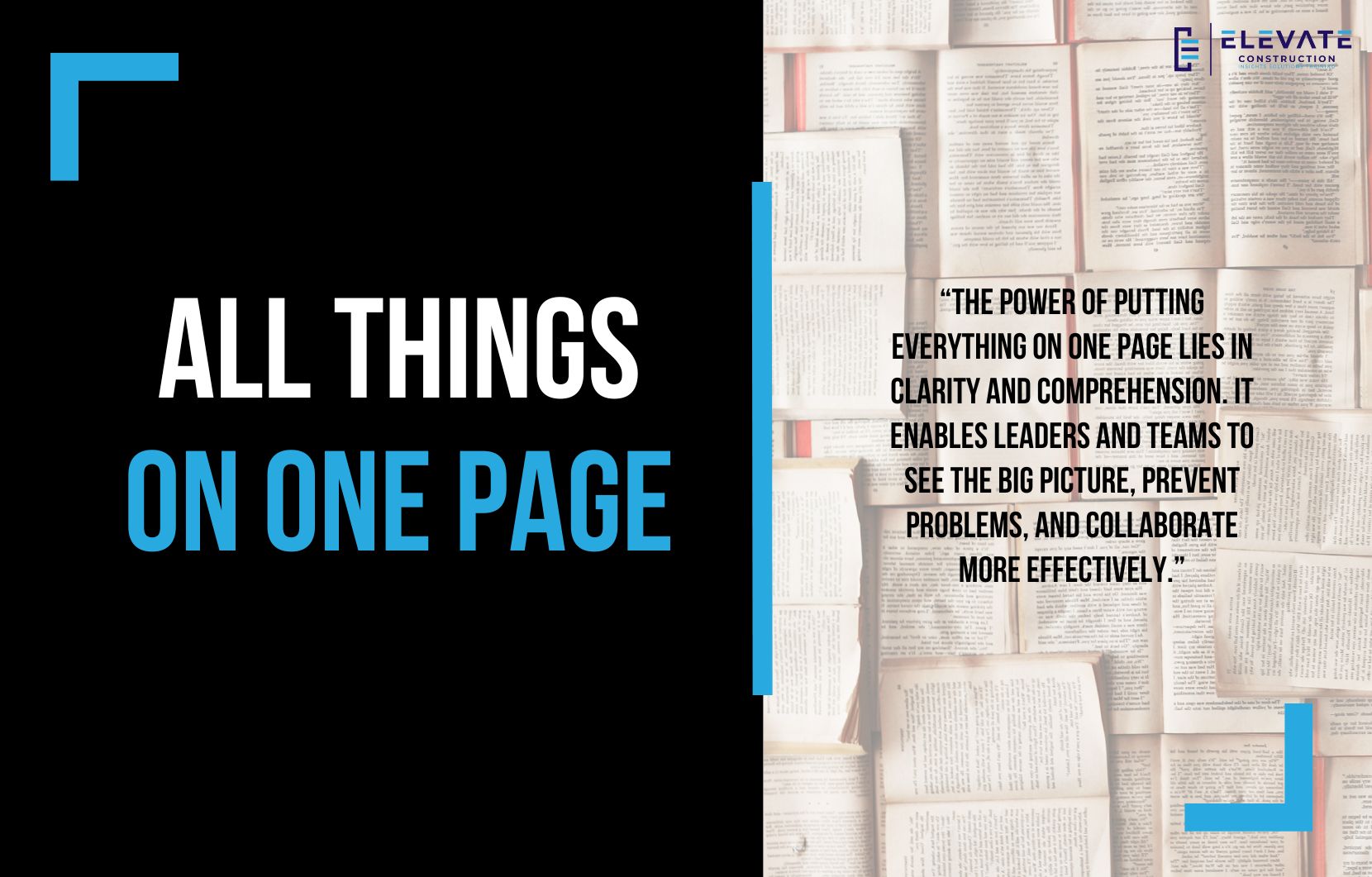Seeing Everything on One Page
This year is shaping up to be an exciting one. I have been working hard on writing the Last Planner System book, and soon we will be sharing it publicly for review. At the same time, I have completed the second revision of the Takt Planning book. That new version includes added content, updated explanations, and improvements based on feedback from the field to make it easier to use. The outline for the Takt Steering and Control book is also complete, and we are almost finished with the Last Planner System book. On top of that, I have scheduled time to start recording some of the other text-focused books. It is going to be a huge year, and I am thrilled about the momentum.
I often receive thoughtful feedback and questions from our listeners and readers. Recently, someone asked about how deep we go into Takt control and execution in the Takt Fundamentals course. The short answer is that we do a deep dive into those areas. They also mentioned reading the most recent Takt book, which came out in October, and were excited about the plans for the second volume focused on Takt Steering and Control. This person had already delivered over 50 presentations on Takt, promoted the books, and helped sell hundreds of copies. Even more inspiring, their company already has over 15 projects in different phases of using Takt with outstanding results. Hearing this feedback and seeing the real impact fuels my excitement for the future of our industry.
That brings me to today’s topic, which is about the power of seeing everything on one page. I had a realization recently that while I have talked about tools like A3s before, I had not emphasized this perspective. A plan, a drawing, or a process presented on one page changes everything. It puts information into context, allows for visualization, and makes problem solving far more effective.
Think back to how construction used to be when we had large sets of drawings laid out in front of us. With a physical set, you could flip through the sheets quickly, keep multiple pages open, and absorb the bigger picture almost instantly. Many of us old timers remember the feeling of being able to highlight, compare, and connect the drawings with a full field of view. Then came the shift to digital platforms, which, while convenient, often limit your field of view. Clicking one sheet at a time can feel disconnected compared to scanning an entire set with your fingers.
That loss of context directly affects comprehension, visualization, and problem solving. It is the same with project schedules. When information is scattered across multiple reports, updates, and spreadsheets, leaders lose the ability to see the entire picture. A Takt plan, on the other hand, puts everything on a single page. That clarity is powerful.
There are many other examples of this principle. A3 reports distill problem solving into one sheet. Lift drawings gather all the necessary details for a component into a single reference page so crews can work without flipping between multiple documents. Infographics combine data and visuals to communicate a concept at a glance. Cheat sheets, shop drawings, simplified contract drawing sets, and calendars all condense essential details into accessible formats. Kanban boards and Scrum boards bring complex workflows into one view. Dashboards condense performance indicators and project data into a snapshot that decision-makers can quickly understand.
The pattern is clear. All of these tools are designed to enable human capacity by giving us the ability to see, process, and act without fragmentation. When we can see the whole picture on one page, we make better decisions, prevent problems earlier, and collaborate more effectively with our teams.
Personally, I could never return to a leadership role on a project without demanding to see everything on one page. Whether as a project executive, director, superintendent, or company owner, I would not feel confident in understanding the state of a project unless I had that single-page clarity.
So here is a challenge for you. Think about the tools, processes, or resources you use every day. Which of them could be simplified and placed onto one page to enhance comprehension and decision-making? The more we enable people to see the big picture at a glance, the more remarkable our projects will become.
At the end of the day, even if you are not drawn to the science and details behind Takt or other lean systems, you can appreciate the sheer genius of being able to see everything on one page. It allows you to grasp your project, anticipate issues, and lead your team with clarity. That is the true power behind this concept, and it is something we can all benefit from in construction and beyond.
On we go.
Key Takeaway
The power of putting everything on one page lies in clarity and comprehension. It enables leaders and teams to see the big picture, prevent problems, and collaborate more effectively.
If you want to learn more we have:
-Takt Virtual Training: (Click here)
-Check out our YouTube channel for more info: (Click here)
-Listen to the Elevate Construction podcast: (Click here)
-Check out our training programs and certifications: (Click here)
-The Takt Book: (Click here)
Discover Jason’s Expertise:
Meet Jason Schroeder, the driving force behind Elevate Construction IST. As the company’s owner and principal consultant, he’s dedicated to taking construction to new heights. With a wealth of industry experience, he’s crafted the Field Engineer Boot Camp and Superintendent Boot Camp – intensive training programs engineered to cultivate top-tier leaders capable of steering their teams towards success. Jason’s vision? To expand his training initiatives across the nation, empowering construction firms to soar to unprecedented levels of excellence.
On we go

